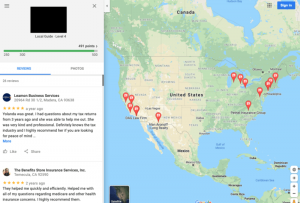By Shelby Clarke, Published November 1, 2014
Back in September I had the opportunity to trav el with the Quintain Marketing team to Boston for Hubspot’s INBOUND 2014 conference. Some of my favorite words of wisdom came from Guy Kawasaki, chief evangelist for Canva, and Peg Fitzpatrick, the head of social strategy at Canva, who spoke on writing “The Perfect Post”.
el with the Quintain Marketing team to Boston for Hubspot’s INBOUND 2014 conference. Some of my favorite words of wisdom came from Guy Kawasaki, chief evangelist for Canva, and Peg Fitzpatrick, the head of social strategy at Canva, who spoke on writing “The Perfect Post”.
These days, social media is a key part of any business marketing strategy. It can take a lot of time, effort, and nurturing, and – when done well – can result in high ROI. If you need a little proof, just read how some top brands utilize social media to their advantage.
Given the importance of social media, I thought I’d share with you some snippets from the minds of Kawasaki and Fitzpatrick, and send you off with 5 ways to perfect your social media posts.
1. Create Valuable Content
Posts on Twitter have the shortest lifespan out of any other social media, so how can we make sure that the content we are promoting is worth the time of our followers? There are three simple questions that we can ask ourselves to be sure we aren’t wasting our time or anyone else’s.
Is It Bold?
Show what you stand for and share your experiences. Kawasaki noted, “You become more interesting when you have people you piss off.” The point here is not to intentionally anger people. Just don’t waste any time worrying. You know who your target audience is, and you know the information they are looking for. They want to know what you think, so show them where you stand and be confident in your knowledge.
Is It Brief?
Don’t overwhelm your audience with too much text in a single post. Twitter has a character limit for a reason, and it’s good practice to place your own limitations on all your social media posts. Try to keep your non-tweet posts around 250 characters. Not only does this help to keep the interest of your readers, it makes sure none of your text gets cut off.
Does it pass the “reshare” test?
Make sure it’s worth passing along. The most reshareable or retweetable posts usually fall under one of four categories:
- Information
- Analysis
- Assistance
- Entertainment
In the end, always go back to see how your posts are received, and if need be, figure out what you can improve upon next time.
2. Use Images
Make the most of every post you create by adding an eye-catching and relevant image. Sites like Canva or PicMonkey can help you create great post images if you don’t have any image-editing apps of your own.
If you aren’t artistically inclined, but don’t have someone to help create graphics for your social media, check out this Socially Stacked blog on how to make designer-quality images.
3. Schedule and Cross-Post
Use social media tools like Hootsuite or Buffer to schedule out your posts. Social media scheduling platforms can help you get the job done well, while streamlining the posting process for you a bit.
And don’t be afraid to create the same post for multiple social media sites. Cross-posting can get those important posts as much visibilty as you can muster. You want to try to reach as large an audience as possible with your posts, so be generous with your sharing.
4. Testing and Analysis
I’ll admit, I’m a bit of a broken record. But if you aren’t using data from past posts to improve future ones, your are missing out, big time.
Create different versions of your posts, A/B test to see what gets more links. Or, see how your posts look “incognito”, so you know what other users are seeing on their end with their different devices and browsers.
Close analysis takes effort, but can be rewarding if you’re willing to put in a little time and research.
5. Keep Calm and Post Often
It’s hard to know exactly how often you should post, or repost, content. On their blog, Buffer does a great job of explaining the methodology behind their own social media management and post frequency. Much of the data they provide can help you to form your own social media strategy and anticipate its success.
As I mentioned repeatedly, it is important to keep an eye on the analytics coming out of your posts. Social media is a continually changing thing; a repost in November may bring in many more leads than the original post did during the summer. Watch for trends and interesting data, and be sure to take advantage of them!
Now get out there and start writing some posts!
If you are interested, feel free to look through the slideshare for the Perfect Post INBOUND 2014 talk.
Social Articles | Business 2 Community
(360)











